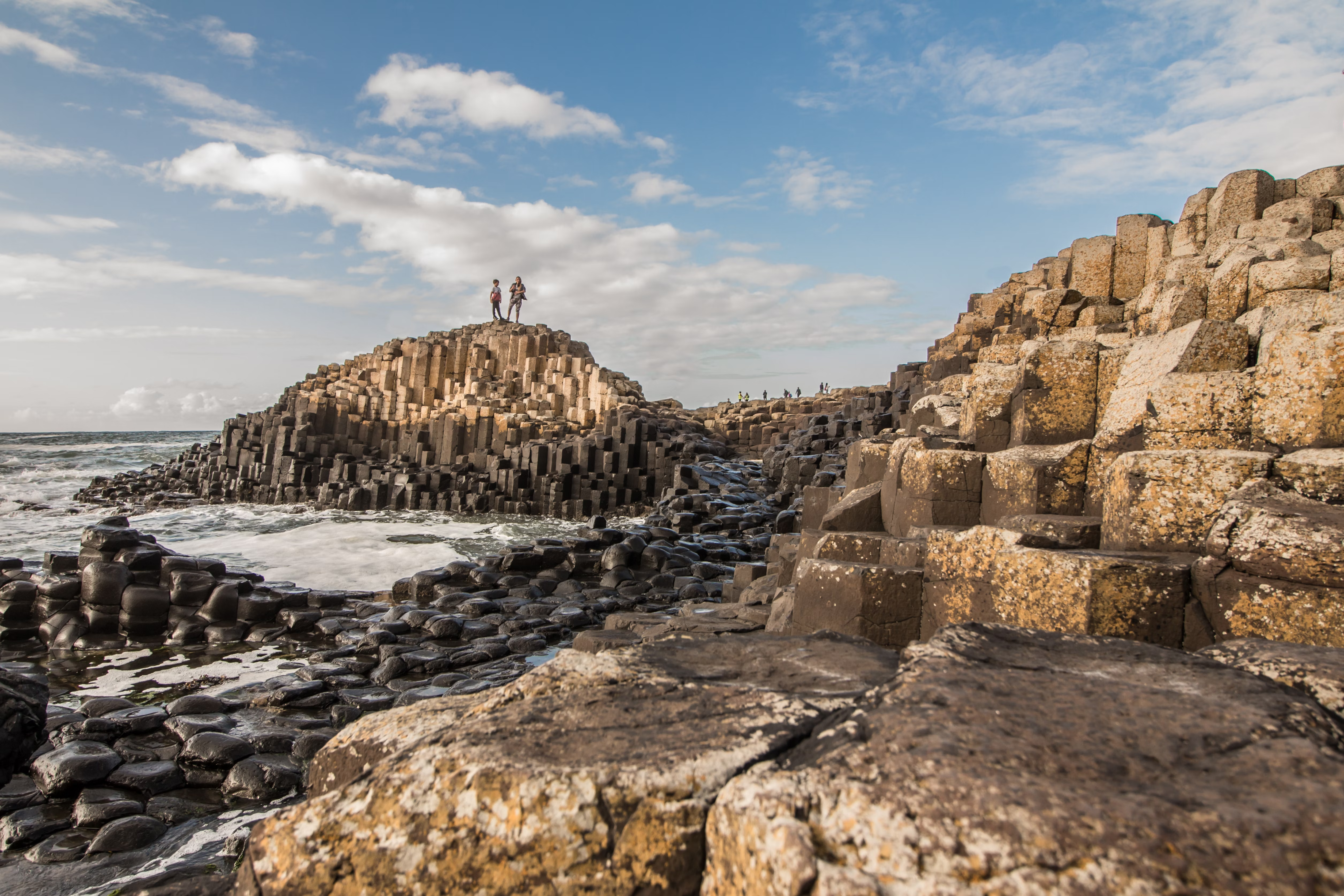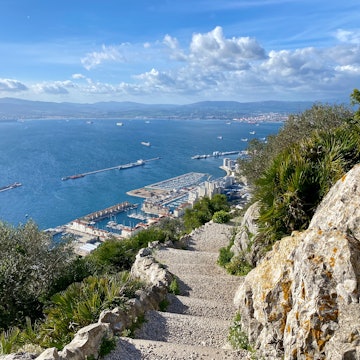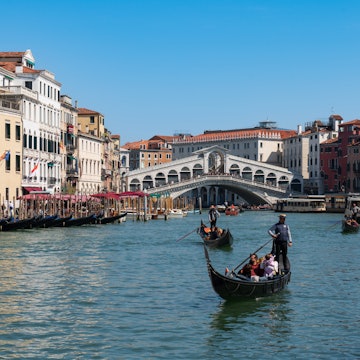

The ruins of Whitby Abbey, North Yorkshire. Dave Head/Shutterstock
From the waves breaking against the White Cliffs of Dover to the soaring Scottish Highlands, the UK is an ancient and starkly beautiful land. But within these wild scenes is a country with a dense cultural legacy stretching back centuries, offering fascinating sojourns into music, literature, food and much more.
Start in London – a cultural nirvana itself that needs little introduction – but try to explore all corners of the UK. Whether it's taking a cinematic coastal walk in Yorkshire, dancing to the crash of indie guitars in Manchester, browsing books in Edinburgh, sampling fiery curries in Birmingham or hiking in the Peak District’s high hills, there’s much to explore.
So decide what you’re interested in and plan well – here are the best places to visit in the UK.

1. London
Best for art, culture and everything else
London is the UK’s high-voltage epicenter, almost a country within a country. Few cities in the world can go toe-to-toe with London in terms of sights, history, museums, art and entertainment.
If it’s your first time, try to tick off a few of London’s greatest icons – Big Ben, St Paul’s Cathedral and Tower Bridge – before checking out a couple of its world-class (and free entry) museums like the Natural History Museum and the National Gallery. Perhaps book a West End show too.
If it’s not your first rodeo, then take a wander and go at a more leisurely pace, breaking up attractions with stops at traditional London pubs for a relaxing pint. This is a city with endless things to do, so don’t burn yourself out.
Planning tip: Plan! The pace of London can be overwhelming on arrival, so a good itinerary is key. The Tube (Underground) is incredibly useful for getting around, but its busy users don’t suffer indecisiveness gladly, so make sure you know where you’re going.

2. The Peak District
Best for the great outdoors
The Lake District is the most well-known of the UK’s outdoor havens, but it suffers from overcrowding in the summer. Less busy and far more centrally located is the Peak District. And with its snaking mountain trails, ragged limestone edges and tranquil lakes, the Hope Valley in particular provides a glorious windswept canvas on which to taste the great outdoors.
The Peak District’s hiking heart is the tiny village of Edale, where several of the region’s best walks begin such as the 7km (4.3-mile) hike to the 510m-high (1673ft) summit of Mam Tor. One of the most evocative cycling trails flanks the edges of Ladybower Reservoir and Derwent Reservoir – the site where the Dambusters practiced their famous Operation Chastise (a legendary WWII attack on German dams using "bouncing bombs").
Stanage Edge is a rugged gritstone escarpment that’s a beautiful setting for rock climbing, and Pure Outdoor in nearby Bamford offer a number of courses to help beginners embark on a thrilling experience.
Planning tip: Remarkably for an outdoor hot spot, the Hope Valley is well connected by train. Travel sustainably and catch a Northern Rail train on the Hope Valley Line from either Sheffield or Manchester where you can alight at Edale or Hathersage’s small stations.

3. North Yorkshire
Best for coastal walks and seaside towns
With its wind-whipped island setting in the North Atlantic, the UK isn’t short on spectacular shores and some of its finest scenes and coastal strolls are found in North Yorkshire.
Start in Whitby and head up the 199 steps to the haunting ruins of Whitby Abbey on East Cliff’s lonely headland. A more horizontal but equally charming trail from Whitby is the 11km (7-mile) walk south along a disused railway line (the Cinder Track) to the quaint Robin Hood’s Bay, with the final bucolic stretch providing some particularly lovely views of the arcing shoreline and with gentle hills behind.
Further north, Staithes is a wonderfully preserved fishing village that’s become something of an artist's colony in recent years thanks to its splendid setting. Make sure to drop by the Cod & Lobster, a historic pub famous for sitting perilously close to the sea. Saltburn is a classic British seaside town too, and its 19th-century funicular Cliff Tramway is a fine example of creative Victorian engineering.
Planning tip: Though there are local buses, it’s most efficient to travel between towns by car.

4. Eryri National Park (Snowdonia)
Best for epic views and Victorian trains
Much of Wales is pretty, but its soaring northwest corner is particularly resplendent. Eryri National Park covers 2132 sq km (823 sq miles) and is home to 15 mountains over 914m-high (3000ft), with the pyramid-like peak of Snowdon the most prominent at 1085m (3560ft). And on a clear day, you can see England, Ireland and the Isle of Man from its summit.
But while climbing Snowdon is a badge of honor for any hiker in Britain, take the time to explore the 90 acres of sylvan woodland in Abergwynant Woods or stroll the serene shores of Llyn Tegid, Wales’ largest lake. The Snowdon Mountain Railway is a popular attraction that’s been running since 1896, though just outside the park the Ffestiniog Railway is worth a detour. The oldest independent railway company in the world, its serpentine Porthmadog to Blaenau Ffestiniog line is sublime and snakes through craggy mountainsides and serene woodlands before finishing in the old slate mining town of Blaenau Ffestiniog.
Planning tip: There are six different paths to Snowdon’s summit, all of the hard/strenous variety, so plan ahead and pack appropriately (prepare for all types of weather).

5. Birmingham
Best for culinary adventures
Second-largest city Birmingham has more Michelin-starred restaurants in the UK than any other city outside of London. But while fine dining shows the creativity and quality of the city’s chefs, Birmingham also has a marvelous mix of restaurants showcasing cuisine from around the world, particularly in its neighborhoods.
Moseley’s Chakana is the city’s first Peruvian restaurant, SOI 1268 in Stirchley is an aromatic Thai-influenced delight, Tropea in Harborne brings masterful Italian cooking and Blow Water Cafe in King's Heath offers a sublime taste of Hong Kong to Birmingham.
Back in the city center, Albatross Death Cult’s 11-course tasting menu is a glorious Japanese seafood experience while chef Aktar Islam’s progressive Indian cooking at Opheem gave the city its first two Michelin-star restaurant in 2024.
Planning tip: No trip to Birmingham is complete without sampling the famous balti curry, so book in at iconic balti purveyors Shababs before you leave the city. It’s best reached by taxi and is unlicensed, so you’ll need to bring your own beer or wine.

6. Edinburgh
Best for spectacular scenes and beguiling bookshops
With its ethereal spires, multilayered topography and hilltop castle, Edinburgh is one of the most majestic cities in Europe, let alone Britain. It’s also long been a favorite haunt of writers, and its homegrown scribes include the likes of Robert Louis Stevenson, Muriel Spark and Sir Walter Scott.
Needless to say, there are many excellent bookshops to peruse amid these handsome streets. With its well-stuffed shelves and the distinct musty smell, Armchair Books in the Old Town is the perfect secondhand bookstore, while over in Portobello the Portobello Bookshop is sleek and airy, and great for modern contemporary fiction.
Edinburgh’s a wonderfully inclusive city too, and Lighthouse Bookshop celebrates all books queer and LGBTIQ+. Over in Stockbridge, Rare Birds Books champions women's writing, only selling books by female authors.

7. Cornwall
Best for beaches
Jutting out into the Atlantic Ocean, Cornwall’s ragged coastline attracts thousands of surfers every summer looking to ride England’s biggest waves. So whether you’re a seasoned pro or a beginner hoping to catch your first wave, Fistral Beach in Newquay is the place to go.
For those who’d rather admire the sea than dive into it, Kynance Cove inlet just north of Lizard Point is a splendid sight, with craggy offshore islands studding the lapping turquoise sea. Further north are the side-by-side beaches of Gwithian and Godrevy Towans, with Godrevy more of a charming cove and its island lighthouse making for a nice photo opportunity. Gwithian’s golden sands are backed by grassy cliffs known in Cornish as towans, which provide a nesting site for seabirds like razorbills and guillemots.
Planning tip: Parking can be limited at Cornwall’s rural beaches, so try to arrive early to secure a spot.

8. Manchester
Best for live music
The UK’s musical legacy is iconic, with countless artists and bands leaving an indelible mark. From producing legendary guitar bands like the Smiths and Oasis to an epic dance music scene in the late 1980s, Manchester is a music city that, while proud of its heritage, still hosts the brightest and best of today's bands every week.
Counting Arctic Monkeys and Kasabian as past performers, Night & Day Cafe on Oldham St hosts regular sessions while local institution Band on the Wall showcases a range of genres from rock to reggae. And don’t miss catching a gig in the upstairs room of the 19th-century Deaf Institute, with its unique seating set-up beneath a domed roof.
Manchester Apollo’s sloping floor makes it a great spot for watching the artists on stage without obstruction and if you’re looking for the biggest acts, many of them pass through Manchester and perform at Co-Op Live, the AO Arena or the Etihad Stadium in the summer.
Planning tip: Lots of pubs will regularly host boisterous free-to-enter acoustic gigs, like Mulligans and the Whiskey Jar.

9. Scottish Islands
Best for wild scenery and distillery hopping
The islands flanking the western shore of Scotland’s mainland are as ancient as they are dramatic, and make for one of the UK’s most otherworldly experiences.
Start with the underrated Arran, often called "Scotland in Miniature" thanks to the ragged mountains in the island’s north that gently flatten into rolling fields further south. Further west, what Islay lacks in breathtaking scenery it makes up for with some of Scotland’s most iconic distilleries. The breezy coastal trail between Laphroaig and Ardbeg is a rite of passage for any Scotch whisky enthusiast.
The Isle of Mull’s famous distillery is Tobermory, but it’s also home to some of Scotland’s most elusive wildlife, including the white-tailed eagle, golden eagle, otter, hen harrier, red deer and seals. And from its rugged Black Cuillins mountains to the Fairy Pools' crystalline shimmer, Skye is probably Scotland’s most photogenic island (though you’ll have to dodge some serious crowds in the summer months).
Planning tip: The islands are hugely popular, so book your accommodation and your travel on CalMac Ferries as far in advance as possible (though note that it’s possible to drive to Skye from the Scottish mainland).

10. York
Best for historic treasures
York’s long story encompasses the Romans, the Vikings, the Tudors, the Victorians and much more. And one stroll up the cobblestoned Shambles – with its crooked half-timbered houses and 18th-century taverns – is like stepping into a period piece.
Built between 1220 and 1480, the Gothic hulk of York Minster is a good place to begin, though you’ll also find some evocative views of the cathedral from the medieval city walls between Bootham Bar and Monk Bar. Following the Viking invasion in 865, York lived under Viking rule for 100 years and the Jorvik Viking Centre (Jorvik being the Norse name for York) is a fine, family-oriented way to learn more about this era. York Castle Museum is a great window into Victorian York, a lesser-known time period in the city and its interactive tours bring its recreated 19th-century street to life wonderfully well.
Planning tip: If you’re staying overnight, consider Gray’s Court, the oldest continuously inhabited house in York, dating back to the 11th century.

11. Giant’s Causeway
Best for natural heritage
There are few places around the world that look like the Giant’s Causeway. Sitting on the north coast of Northern Ireland in County Antrim, its 40,000 black basalt columns stick out of the sea forming a bizarre and dramatic landscape. Though an ancient volcanic fissure eruption formed this UNESCO World Heritage Site, the more romantic notion is the legend that an Irish giant named Finn McCool hurled rocks into the sea to forge a causeway across the Irish Sea to face his rival, the Scottish giant Benandonner. Regardless, it’s a fascinating and truly unusual part of the world.
The Causeway is just an hour’s drive north of Northern Ireland’s largest city Belfast, though the surrounding area is worth exploring further. Further west, the wind-whipped ruins of Dunluce Castle are a majestic sight while the twin coastal resorts of Portrush and Portstewart are breezy summer escapes. And a short drive south, Bushmills is the world’s oldest licensed whiskey distillery (1608).
Planning tip: Giant’s Causeway is busy at peak times, so arrive early for the best photo opportunities (without people in the background).














